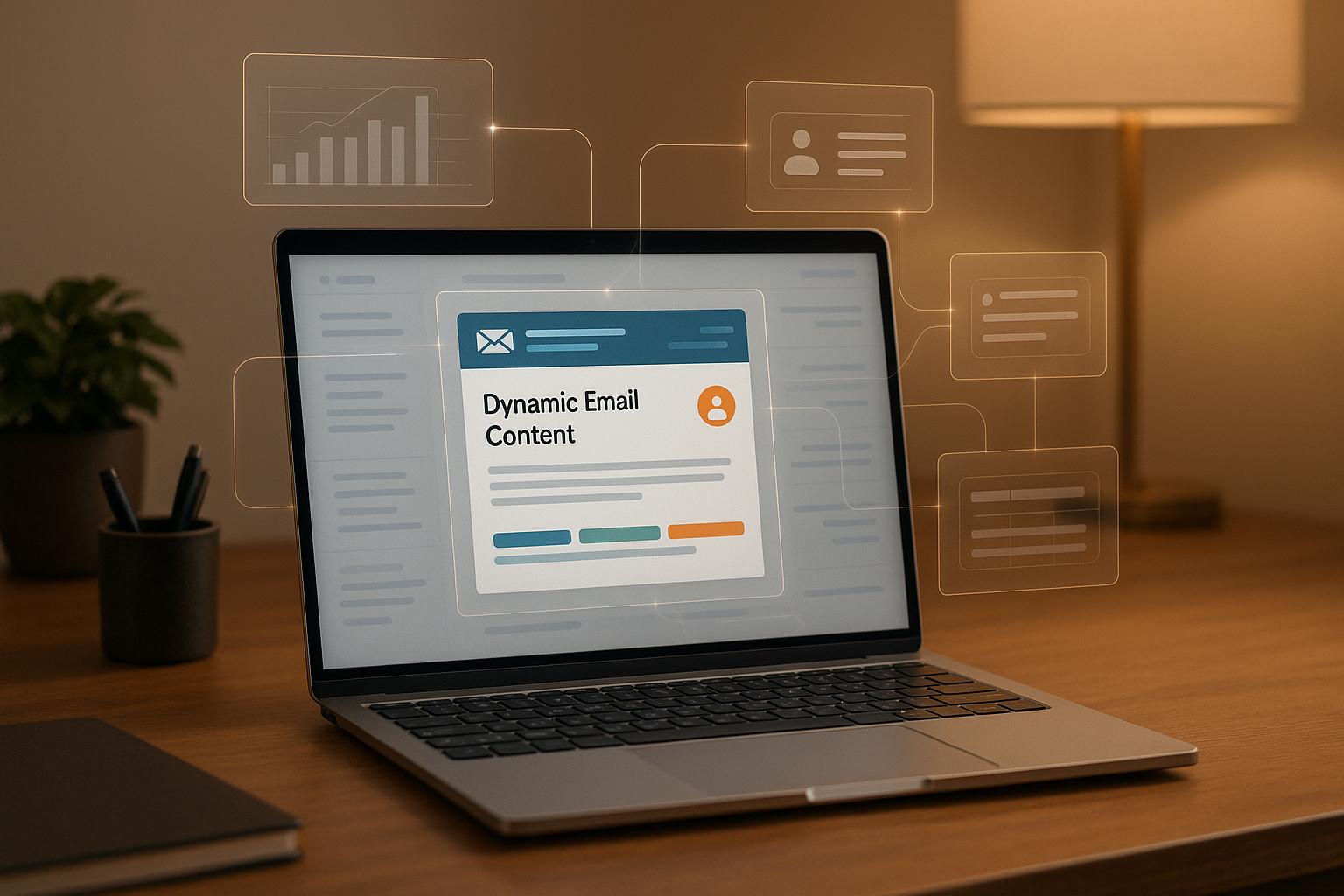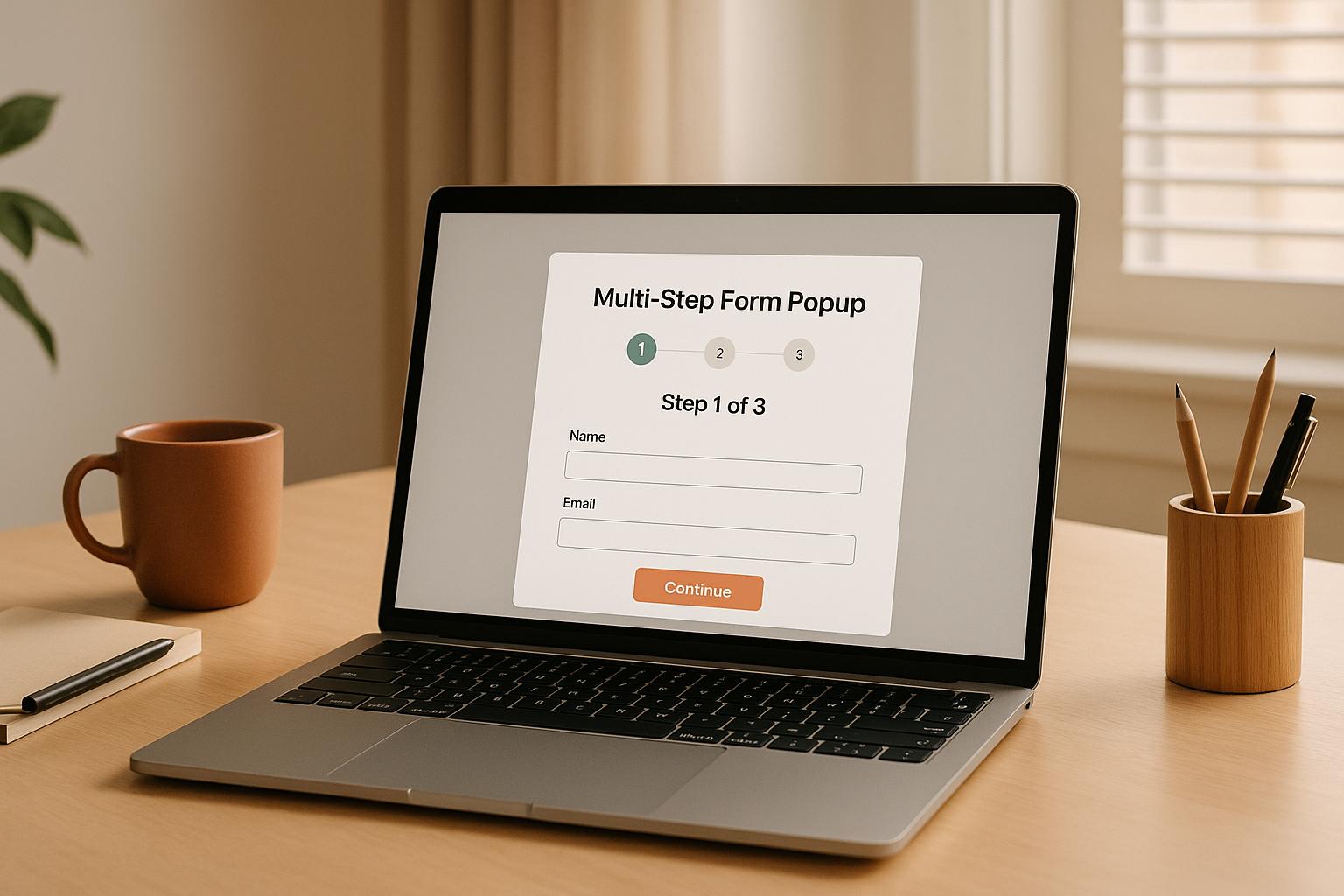Ultimate Guide to Lead Enrichment for Marketers

Lead enrichment is the process of turning raw lead data into detailed, actionable profiles. It helps marketers improve lead scoring, personalize campaigns, and boost ROI by adding key details like company size, job titles, and behavioral insights. Here's what you need to know:
- Why It Matters: Enriched leads lead to better targeting, smarter decisions, and higher conversions.
- Key Components: Use demographic, firmographic, and behavioral data to create complete profiles.
- Tools & Techniques: Automation, CRMs, and AI-powered scoring make the process efficient and scalable.
- Best Practices: Ensure data accuracy, personalize outreach, and regularly monitor processes to stay effective.
The BEST Way to Enrich Your Lead List
Components of Lead Enrichment
Data Sources for Lead Enrichment
Lead enrichment relies on three main data types: demographic, firmographic, and behavioral.
- Demographic data includes personal details like age, location, and contact information.
- Firmographic data provides business-related insights such as company size, industry, and organizational structure.
- Behavioral data tracks how leads interact with your content, products, and channels.
A recent study found that 70% of B2B marketers consider data quality the foundation of successful lead enrichment [3]. This highlights the need to choose trustworthy data sources and ensure accuracy throughout the process.
| Data Type | Key Information | Business Impact |
|---|---|---|
| Demographic | Age, Location, Contact Details | Personalized Messaging |
| Firmographic | Company Size, Industry, Revenue | Focused B2B Outreach |
| Behavioral | Website Visits, Content Downloads, Purchases | Targeted Campaigns |
Once data is enriched, the next step is segmentation, which transforms this information into actionable strategies.
Lead Segmentation
Segmenting leads can increase conversion rates by up to 20% [4]. By categorizing leads based on specific attributes, you can create highly tailored campaigns that resonate with each group.
Tools like Reform make segmentation more efficient by automatically sorting leads using real-time data. This ensures follow-ups are timely and relevant. To make the most of segmentation, CRM systems and marketing tools are essential for organizing and applying enriched data.
Role of CRM and Marketing Tools in Lead Enrichment
Modern CRM platforms act as the backbone of lead enrichment. They automate data collection, ensure consistency across channels, and keep information up-to-date.
The best CRM tools validate data, integrate with marketing systems, and streamline workflows. They also adapt to your business's growth and changing market conditions. Regular updates and monitoring are key to maintaining an effective enrichment process.
"Lead enrichment involves gathering, organizing, and examining data related to a customer's interest in a company's offerings." - Cognism, "What is Lead Enrichment? Everything to Know in 2025" [5]
Implementing Lead Enrichment Strategies
Optimizing Lead Collection Forms
Smartly designed lead collection forms are the foundation of effective lead enrichment. The goal? Collect detailed data without frustrating users. Tools like Reform make this easier by combining user-friendly features with robust data-gathering capabilities.
Here’s what a strong lead collection form should include:
| Form Element | Purpose | Impact |
|---|---|---|
| Progressive Fields | Collect data in stages | Increases form completion rates |
| Smart Validation | Instantly checks data accuracy | Cuts down on manual corrections |
| Conditional Logic | Displays fields based on user responses | Boosts data relevance and quality |
Once you've set up your forms to capture high-quality data, automation can take over to handle the processing.
Automation in Data Collection
Automation tools simplify the process by validating data in real time, syncing it with CRMs, and enriching it through third-party integrations. AI can also step in to score and segment leads, ensuring your data is consistent and actionable - all while saving time and effort.
With your enriched data ready, the next step is to ensure it reaches the right people for follow-up.
Lead Routing and Assignment
Assigning leads to the right sales reps based on enriched data ensures faster responses and better conversion rates. This process uses insights like engagement levels, potential value, and geographic location to route leads effectively.
Keep an eye on metrics like conversion rates to refine your routing strategies and make sure your enriched data drives real results.
sbb-itb-5f36581
Advanced Lead Enrichment Techniques
Using Intent Data
Intent data takes lead insights to the next level by analyzing digital behavior to predict interest and readiness to buy. Unlike past behavior, this data focuses on what leads are likely to do next, offering a proactive approach to engagement.
| Intent Signal Type | What It Reveals | Action to Take |
|---|---|---|
| Content Interaction | Topics of interest, challenges, and timing | Customize content and adjust outreach |
| Search Queries | Buying intent and awareness stage | Tailor messaging to match their journey |
By layering insights from various intent signals, marketers can gain a clearer picture of what leads want, helping them craft better outreach strategies.
AI-Powered Lead Scoring
AI has transformed lead scoring by moving beyond traditional methods to predictive models. These tools combine intent data with enriched profiles to deliver precise, actionable scores. The best part? They improve over time as they learn from new data.
AI evaluates everything from engagement and behavior to firmographics and historical activity to predict who’s most likely to convert. This reduces the chances of chasing unqualified leads and helps teams focus on the ones with real potential.
Integration with Advanced Tools
To make the most of AI and intent data, integrating with advanced tools is key. Seamless workflows ensure enriched data moves smoothly between systems, enabling real-time action without sacrificing accuracy.
Here’s what integration can do:
- Validate and enrich data instantly
- Automatically route leads to the right team
- Process and analyze new leads on the spot
These automated processes ensure no lead falls through the cracks. By connecting data collection directly to actionable insights, businesses can turn enriched profiles into revenue opportunities faster than ever.
Best Practices for Lead Enrichment
Ensuring Data Accuracy
Accurate data is the backbone of effective lead enrichment. Use strong validation methods at the point of data collection to weed out low-quality leads and keep your database clean.
| Data Quality Check | Purpose | Impact |
|---|---|---|
| Email Validation | Catch fake or incorrect email addresses | Cuts bounce rates by up to 98% |
| Duplicate Detection | Keep a single, reliable record for each lead | Boosts database efficiency |
| Data Standardization | Maintain consistent formats across all fields | Supports accurate segmentation |
Tools like Reform simplify this process by offering built-in validation features that catch errors before they enter your system. This upfront effort saves time and avoids expensive cleanup later.
Once your data is accurate, you can use it to craft personalized strategies that resonate with your leads.
Using Data for Personalization
Data enrichment shines when it fuels personalization. Instead of sending generic messages, you can use enriched data to design campaigns that directly address a lead's preferences and needs.
Combine different types of data - like behavioral trends, firmographics, and intent signals - to build a detailed profile for each lead. For instance, if a lead frequently visits your pricing page, focus your outreach on ROI and value-driven messaging.
To keep these personalized campaigns effective, regular reviews and updates are essential.
Monitoring and Refining Processes
To keep your enriched data actionable and aligned with your goals, continuous monitoring is key. Regularly review:
- Data accuracy and completeness
- Integration between your systems (e.g., CRM and marketing tools)
- Lead conversion trends
- Reliability of data sources
Pay close attention to how data flows between systems. Syncing tools like your CRM and marketing platforms ensures consistent data across the board. Routine audits can help you spot issues like lost or corrupted data along the way.
"Regular reviews can help in adapting strategies to changing market conditions and customer needs" [1][2].
Stay flexible by testing new data sources and validation methods. As tools and market dynamics evolve, your enrichment strategy should evolve too. Keep an eye on metrics like lead quality scores and conversion rates to measure how well your adjustments are working.
Conclusion
Key Points
The value of improved lead data is clear across these three areas:
| Focus Area | Key Advantage | Result |
|---|---|---|
| Better Lead Data | Verified details and qualification | Smarter decisions and smoother sales |
| Tailored Campaigns | Focused messaging and engagement | Increased conversions |
| Efficient Processes | Automated data handling | Better use of resources |
Improving lead data helps marketers make smarter decisions and boost revenue. By blending automation with thoughtful analysis, you can strengthen connections with prospects while saving time and effort.
Here’s how to put these ideas into action.
Next Steps for Marketers
To get started with lead enrichment, follow these practical steps:
- Audit your current data collection methods to identify strengths and weaknesses.
- Spot missing information and focus on areas that matter most for your goals.
- Use automated tools to enhance and expand your existing data.
- Track performance metrics and adjust your approach as needed.
Lead enrichment isn’t a one-and-done process. Keep fine-tuning your strategy to stay aligned with your marketing goals and create meaningful interactions with your audience.
FAQs
What is lead data enrichment?
Lead data enrichment is the process of enhancing basic lead information with additional insights. This creates detailed profiles that help marketers make smarter decisions. It turns simple contact details into actionable data, such as understanding prospects' interests, behaviors, and needs, which can boost conversion rates.
How to do lead enrichment?
Lead enrichment typically involves four key phases:
| Phase | Activities |
|---|---|
| Data Collection | Collecting information through forms and third-party tools |
| Lead Routing | Assigning leads to the right teams based on specific criteria |
| Lead Conversion | Scoring and qualifying leads to identify high-priority prospects |
| Lead Nurturing | Engaging leads with personalized strategies to build relationships |
Automation tools combined with manual reviews can help ensure data accuracy while scaling these efforts effectively.
What does it mean to enrich leads?
Enriching leads involves adding more detailed information to basic contact data. This can include:
- Company details like size and industry
- Behavioral patterns and engagement history
- Indicators of purchase intent
- Information about the technology they use
- Location and demographic data
With these enriched profiles, marketers can create more targeted campaigns and implement effective lead-nurturing strategies.
These FAQs outline the basics of lead enrichment, offering marketers the tools to apply the strategies discussed in this guide.
Related posts
Get new content delivered straight to your inbox

The Response
Updates on the Reform platform, insights on optimizing conversion rates, and tips to craft forms that convert.
Drive real results with form optimizations
Tested across hundreds of experiments, our strategies deliver a 215% lift in qualified leads for B2B and SaaS companies.


.webp)



